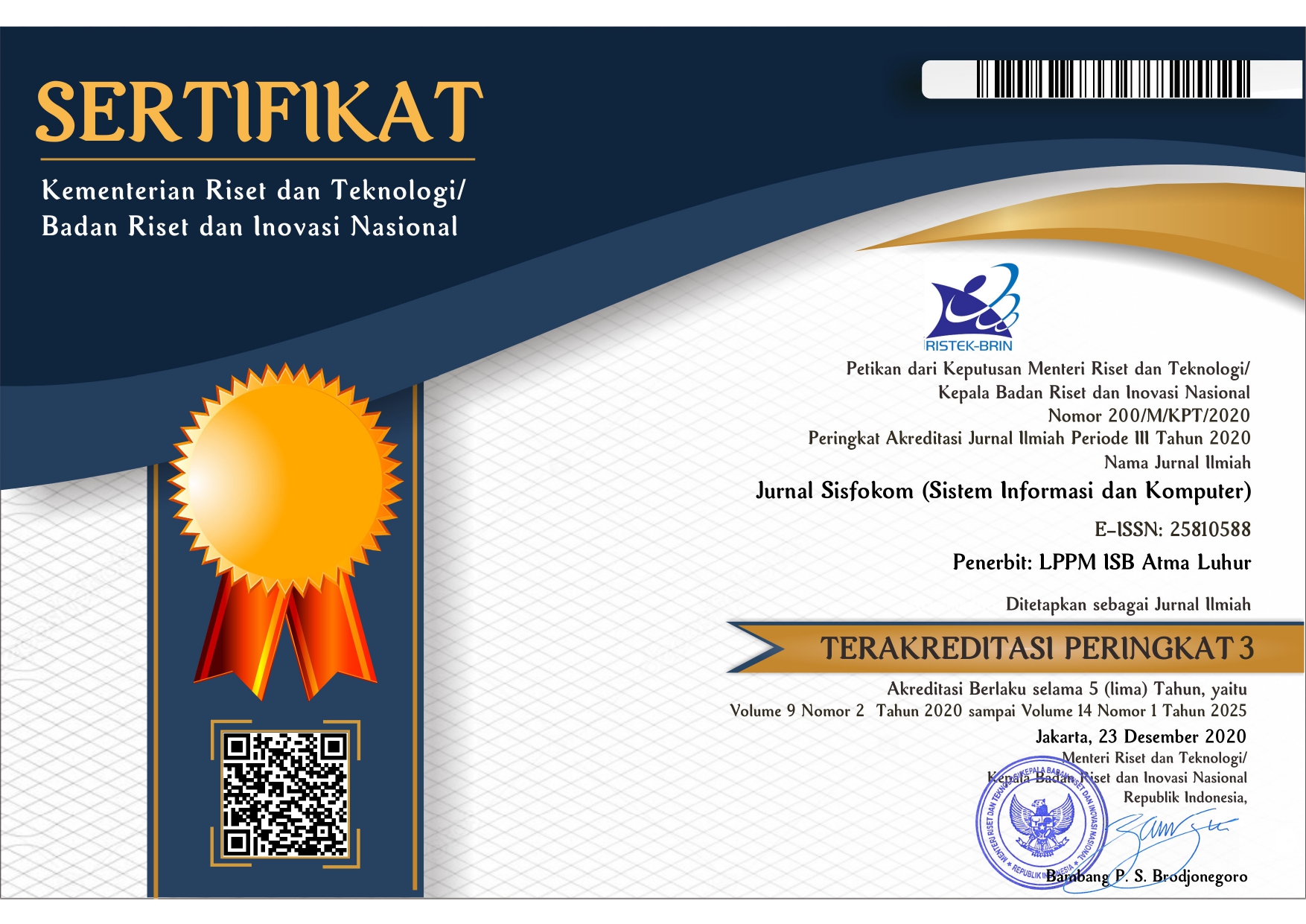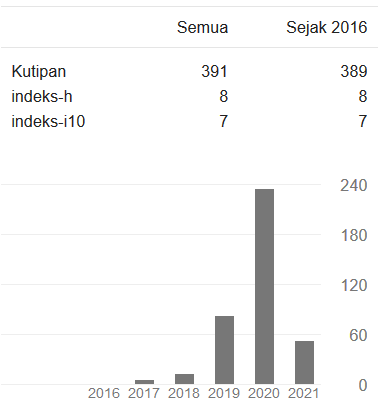Verse Search System for Sound Differences in the Qur’an Based on the Text of Phonetic Similarities
DOI:
https://doi.org/10.32736/sisfokom.v9i3.935Keywords:
phonetic search, N-grams, string matchingAbstract
Al-Qur'an has a lot of content, so the system of searching for verses of the Al-Qur’an is needed because if it is done manually it will be difficult. One of the search systems for the verses of the Al-Qur'an in accordance with Indonesia’s pronunciation is Lafzi. The Lafzi system can search for verse fragments using keywords in Latin characters. Lafzi has been developed into Lafzi +, wherein the Lafzi + system can be used to search verses of the Al-Qur’an with different sounds on stop signs. However, the Lafzi+ can only overcome the difference in the sound of the stop sign and cannot be applied throughout Al-Qur’an. Based on these problems, the system needs to be developed to overcome the differences in sound in the middle of the verse and can be applied throughout the Al-Qur’an. The method used in the process of searching for the verse is the N-gram method. The N-gram used in this research is trigram. The process flow of this system is first normalized in the phonetic coding process after normalized then tokenization of trigrams and then trigrams are matched between the query and the corpus and entered into the ranking process to get an output candidate. In the making process, the LIS (Longest Increasing Subsequence) method is used to get an orderly and strict trigram sequence. The highest order score will be the top output. The results of this study obtained a recall value of 100% and MAP of 87%.References
A. Sleit, and M. El-Haj B. Hammo, Effectiveness of query expansion in searching the holy quran., 2007.
Tanzil. [Online]. http://tanzil.net
IslamiCity. [Online]. http://www.islamicity.org
M. A. Istiadi, “Sistem pencarian ayat al-qur’an berbasis kemiripan fonetis,” 2012.
M. A. Bijaksana, and K. M. Lhaksmana N. Rasyad, "Pencarian potongan ayat al-qur’an dengan perbedaan," Jurnal Linguistik Komputasional, vol. 1, 2019.
Siti Nurhanifah, "Pencarian Informasi dengan Metode Trigram".
K.-Y. Whang, J.-G. Lee, and M.-J. Lee M.-S. Kim, n-gram/2l: A space and time efficient two-level n-gram. In Proceedings of the 31st international conference on Very large data bases.
Nadiazhr. 13 macam tanda waqaf yang wajib kamu ketahui.
M. Syaroni and R. Munir, "Pencocokan string berdasarkan kemiripan ucapan (phonetic string matching) dalam bahasa inggris," Islamic University of Indonesia, 2005.
A. Binstock and J. Rex, "Practical algorithms for programmers," Addison-Wesley Longman Publishing Co.,Inc, 1995.
J. M. Trenkle, et al. W. B. Cavnar, "N-gram-based text categorization," In Proceedings of SDAIR-94, 3rd annual symposium on document analysis and information retrieval, vol. 161175.
D. He, Z. Yue, and J. Jiang S. Han, "Contextual support for collaborative information retrieval," In Proceedings of the 2016 ACM on Conference on Human Information Interaction and Retrieval, 2016.
M. A. Bijaksana, and S. Al Faraby P. A. Arsaningtyas, "Sistem pencarian ayat al-quran berdasarkan kemiripan ucapan menggunakan algoritma soundex dan damerau-levenshtein distance," Jurnnal Linguistik Komputasional, 2018.
D. Kelly, "Methods for evaluating interactive information retrieval systems with users. ," Foundations and trends in Information Retrieval, 2009.
S. C. Soeratno, M. Ramlan, and I. D. P. Wijana S. Hadi, "Perubahan Fonologis Kata-kata Serapan dari Bahasa Arab dalam Bahasa Indonesia," Gadjah Mada University, 2003.
D. Romik, "The surprising mathematics of longest increasing subsequences," Cambridge University, 2015.
Downloads
Additional Files
Published
Issue
Section
License
The copyright of the article that accepted for publication shall be assigned to Jurnal Sisfokom (Sistem Informasi dan Komputer) and LPPM ISB Atma Luhur as the publisher of the journal. Copyright includes the right to reproduce and deliver the article in all form and media, including reprints, photographs, microfilms, and any other similar reproductions, as well as translations.
Jurnal Sisfokom (Sistem Informasi dan Komputer), LPPM ISB Atma Luhur, and the Editors make every effort to ensure that no wrong or misleading data, opinions or statements be published in the journal. In any way, the contents of the articles and advertisements published in Jurnal Sisfokom (Sistem Informasi dan Komputer) are the sole and exclusive responsibility of their respective authors.
Jurnal Sisfokom (Sistem Informasi dan Komputer) has full publishing rights to the published articles. Authors are allowed to distribute articles that have been published by sharing the link or DOI of the article. Authors are allowed to use their articles for legal purposes deemed necessary without the written permission of the journal with the initial publication notification from the Jurnal Sisfokom (Sistem Informasi dan Komputer).
The Copyright Transfer Form can be downloaded [Copyright Transfer Form Jurnal Sisfokom (Sistem Informasi dan Komputer).
This agreement is to be signed by at least one of the authors who have obtained the assent of the co-author(s). After submission of this agreement signed by the corresponding author, changes of authorship or in the order of the authors listed will not be accepted. The copyright form should be signed originally, and send it to the Editorial in the form of scanned document to sisfokom@atmaluhur.ac.id.






